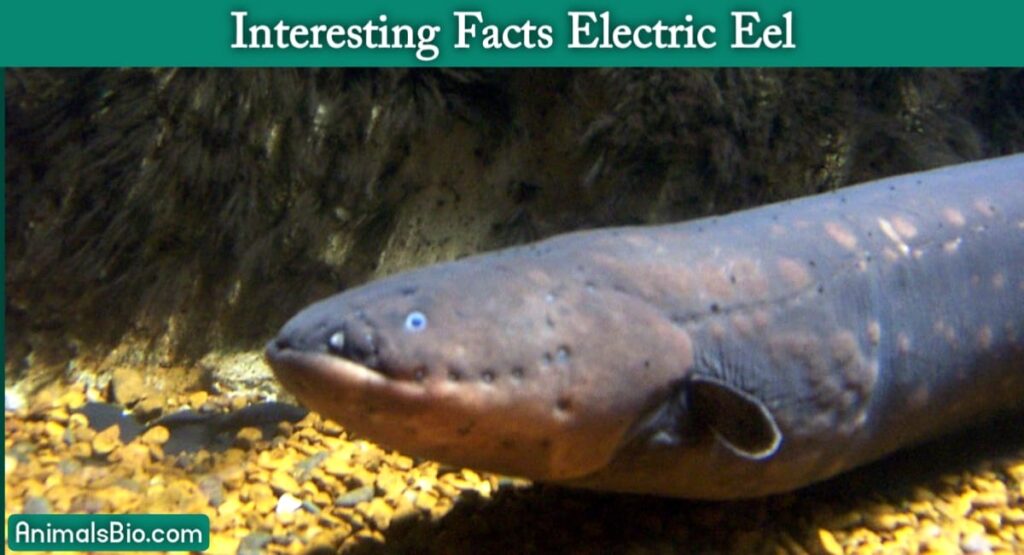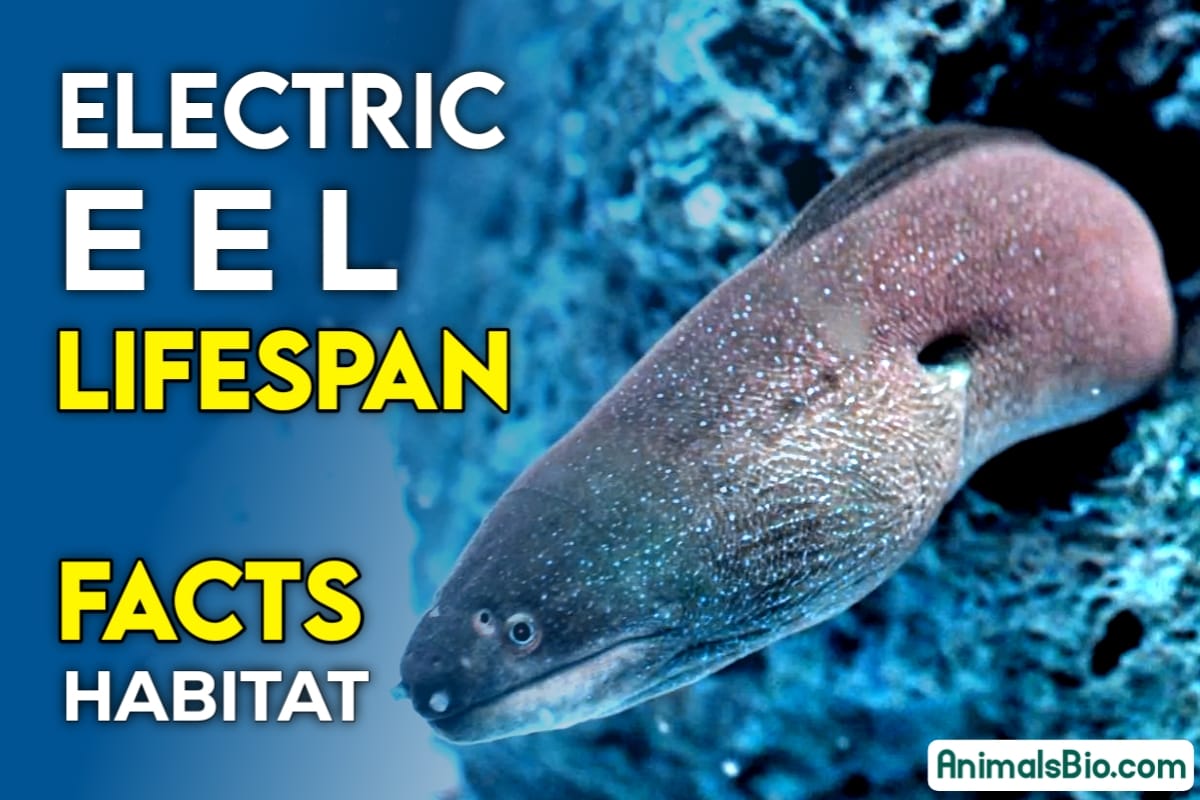In the deep parts of the Amazon and Orinoco rivers, there’s a creature that looks like something from a science fiction story. It’s able to make strong electric shocks that can stun its prey and scare away predators. This creature is called the electric eel (Electrophorus electricus).
It’s a fascinating kind of fish that still interests scientists and people who love nature. Let’s Explore the electrifying world of electric eels. We’ll talk about where they live, how they’re different from other fish, and what amazing things they can do.
Discovering the Electric Eel
Despite its name, the electric eel is not an eel at all but rather a species of knifefish native to the freshwater ecosystems of South America. These elongated creatures can grow to lengths exceeding 8 feet and weigh up to 44 pounds, making them one of the largest freshwater fish in their habitat. However, it’s not their size alone that makes electric eels stand out. it’s their ability to generate electricity.
Electrifying Adaptations

The electric eel possesses remarkable abilities thanks to its specialized electric organs, made up of thousands of electrocytes. These cells function like biological batteries, capable of generating electric discharges ranging from 600 to 800 volts, and sometimes even reaching up to 860 volts.
This impressive capability is achieved through the coordination of three primary electric organs within the eel’s body: the main organ, Hunter’s organ, and Sachs’ organ.
But why do electric eels produce such high-voltage shocks? These discharges serve various purposes in the eel’s life. From stunning prey to deterring predators and communicating with other eels, electricity plays a crucial role in their survival tactics.
The electric eel’s ability to produce these shocks with precision and control underscores the incredible evolution of their electric organs.
Habitat and Distribution
Electric eels are mainly located in the murky, slow-moving waters of the Amazon and Orinoco river basins. They typically reside in environments like swamps, creeks, and small rivers.
Their favored habitats consist of areas with plenty of vegetation and submerged logs, offering them many chances for hunting and finding shelter. Despite being widespread throughout these river systems, electric eels are elusive animals, often staying hidden in the depths where humans rarely see them.
Life in the Amazon

Life for an electric eel comes with its share of difficulties. Apart from navigating their intricate underwater environment, electric eels constantly deal with the threat of predators and competition for resources.
To tackle these challenges, electric eels have evolved a variety of unique adaptations, ranging from their specialized electric organs to their essential need to breathe air.
Unlike most fish, electric eels are obligate air-breathers, meaning they must regularly come to the surface to take in atmospheric oxygen. This dependence on air has led to the development of a specialized organ called the suprabranchial organ.
This organ helps electric eels efficiently extract oxygen from the air. This adaptation allows them to thrive even in waters with low oxygen levels, providing them with a competitive advantage in their environment.
Suggested Article : Bald Eagle Lifespan – Interesting Facts
Suggested Article : Why Are Tigers Going Extinct ?
Feeding Behavior
Electric eels are carnivorous hunters, mainly feeding on fish but also devouring small mammals, amphibians, and birds. Their electric shocks are vital for hunting, enabling them to immobilize prey and enhance capture.
By emitting quick successions of electric pulses, electric eels generate a localized electric field that stuns nearby prey, making it simpler to catch and consume. This distinctive hunting approach demonstrates the accuracy and mastery with which electric eels employ their electric abilities.
Reproduction and Life Cycle
In addition to their remarkable hunting abilities, electric eels also exhibit unique reproductive strategies. Rather than laying eggs like most fish, electric eels are capable of internal fertilization, with females producing live young.
During the breeding season, female electric eels release thousands of larvae into the water, where they must fend for themselves from the moment of birth. This early independence is a testament to the harsh realities of life in the Amazon, where survival depends on quick adaptation and resilience.
Conservation Status
Despite their remarkable adaptations and ecological importance, electric eels face numerous threats in their natural habitat. Habitat destruction, pollution, and overfishing pose significant risks to electric eel populations, putting them at risk of decline.
Conservation efforts aimed at preserving the Amazonian ecosystem are crucial for safeguarding the future of electric eels and other species that call this unique habitat home.
Interesting Facts

While exploring the electrifying world of electric eels, it’s impossible not to be amazed by some of the most intriguing facts about these fascinating creatures. Let’s delve into some captivating tidbits:
Powerful Shocking Abilities: Electric eels are capable of producing electric shocks of up to 860 volts, which is more than five times the voltage found in a standard household electrical outlet. This astonishing ability allows them to stun prey and deter predators effectively.
Three Species in One: Electric eels are not just a single species but actually three species grouped under the scientific name Electrophorus. These species are Electrophorus electricus, Electrophorus voltai, and Electrophorus varii, with E. electricus being the most well-known and widely studied.
Biological Batteries: The electric organs of electric eels are essentially stacks of electrocytes, specialized cells that act like biological batteries. When these cells are activated, they generate electric currents that can be discharged in pulses to produce shocks.
Continuous Discharge: Unlike the short bursts of electricity produced by some other electric fish species, electric eels can sustain their electric discharges for several seconds at a time. This continuous discharge enables them to effectively incapacitate larger prey and defend themselves against threats.
Electricity for Navigation: Electric eels use their electric organs not only for hunting and defense but also for navigation. By emitting low-voltage electric pulses, they can detect objects and navigate through their murky underwater environments with remarkable precision.
Harmless to Humans: While the shocks produced by electric eels are powerful enough to stun prey and deter predators, they are generally not lethal to humans. However, a strong shock from an electric eel can cause significant discomfort and temporary paralysis, making them formidable adversaries in their natural habitat.
Long-Distance Communication: Electric eels are also known to use their electric discharges for communication with other eels. By emitting distinct patterns of electric pulses, they can convey information such as mating signals or warnings to nearby conspecifics.
Complex Social Behavior: Despite their solitary nature, electric eels exhibit complex social behaviors, especially during the breeding season. Males engage in elaborate courtship displays to attract females, and females may choose mates based on the quality of their electric signals.
Obligate Air-Breathers: Electric eels have adapted to their oxygen-deprived aquatic habitats by evolving the ability to breathe air. They must regularly surface to gulp air into their specialized suprabranchial organ, which enables them to extract oxygen from the air more efficiently than typical fish gills.
Cultural Significance: Electric eels have been revered and feared by indigenous Amazonian tribes for centuries. They feature prominently in local folklore and mythology, often symbolizing strength, power, and mystical abilities.
These captivating facts only scratch the surface of the myriad wonders that electric eels possess. As scientists continue to study and unravel the mysteries of these remarkable creatures, we can only marvel at the incredible adaptations and abilities that have allowed electric eels to thrive in their unique aquatic habitats for millions of years.
Conclusion
In the depths of the Amazonian waters, amidst the tangled roots and murky depths, electric eels reign supreme as masters of electricity.
From their specialized electric organs to their unique hunting strategies, electric eels continue to inspire awe and fascination among researchers and enthusiasts worldwide.
As we unravel the mysteries of their electrifying world, let us also recognize the importance of conservation efforts aimed at protecting these remarkable creatures and the fragile ecosystems they inhabit.
Frequently Asked Questions (FAQ)
Where do Electric eels Live ?
Electric eels are primarily found in the freshwater ecosystems of the Amazon and Orinoco river basins in South America. They inhabit murky, slow-moving waters such as swamps, creeks, and small rivers, often preferring areas with abundant vegetation and submerged logs.
Can Electric eel Kill Human ?
While electric eels can deliver powerful electric shocks, they are not typically lethal to humans. However, a strong shock from an electric eel can cause significant discomfort, temporary paralysis, and potentially lead to drowning if encountered in water.
It’s essential to treat encounters with electric eels cautiously and avoid provoking them.
What do Electric eels Eat ?
Electric eels are carnivorous predators, primarily feeding on fish. However, they also consume other small aquatic animals such as amphibians, crustaceans, and even small mammals and birds.
Their diet primarily consists of whatever prey is available in their habitat, and they use their electric discharges to immobilize and capture their prey effectively.
How Many Volts Electric eel ?
Electric eels are capable of producing electric shocks with voltages ranging from 600 to 800 volts on average. However, they have been known to deliver shocks of up to 860 volts in some cases.
These shocks are generated by specialized electric organs within the eel’s body and are used for hunting, self-defense, and communication.
How do Electric eels Shock ?
Electric eels possess specialized organs called electrocytes, which are stacked like batteries in their bodies. When these electrocytes are activated by the eel’s nervous system, they simultaneously discharge, producing an electric current.
This current travels through the eel’s body and is emitted through its skin into the surrounding water. The electric shock is delivered in pulses and can stun prey, deter predators, or be used for navigation and communication.






